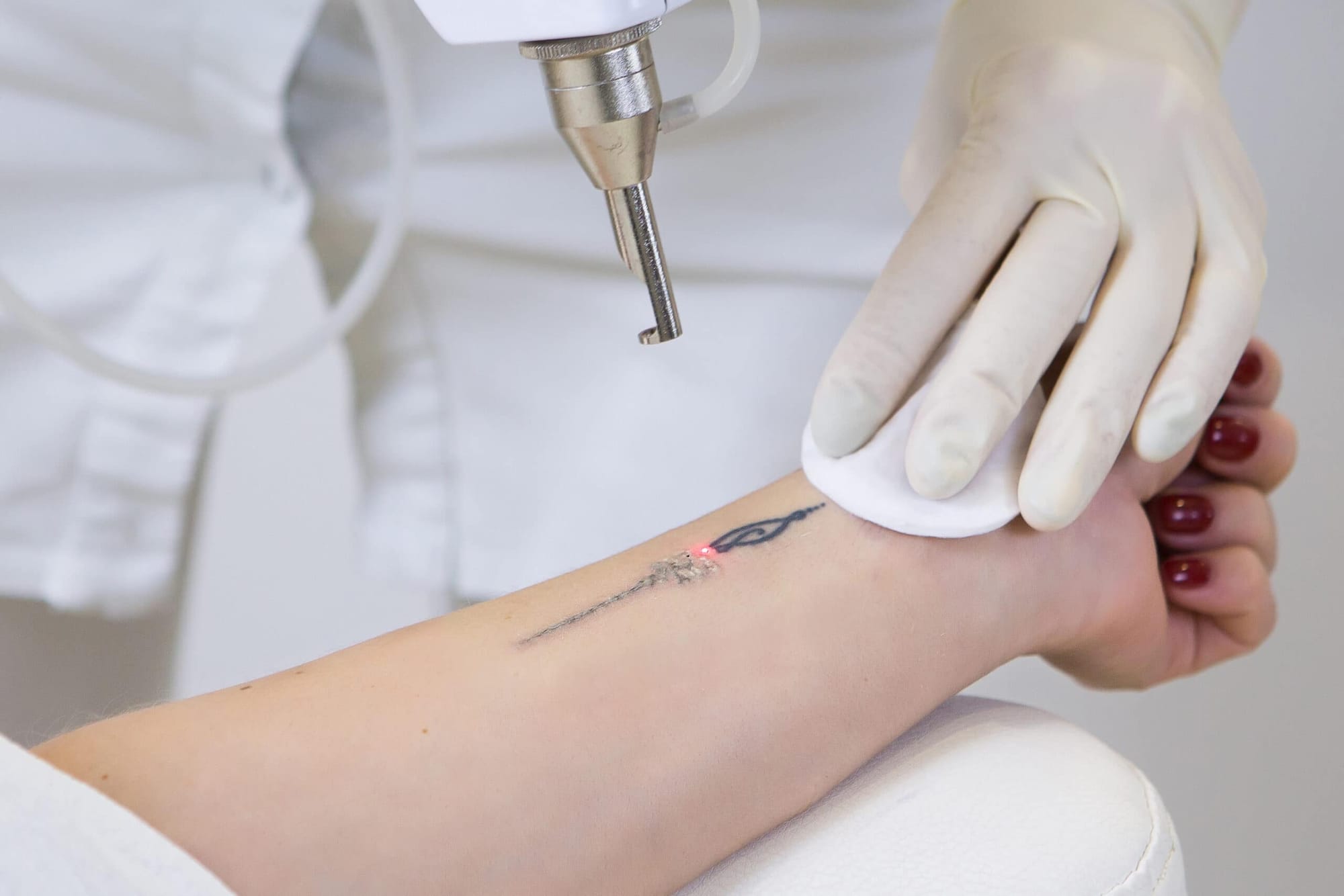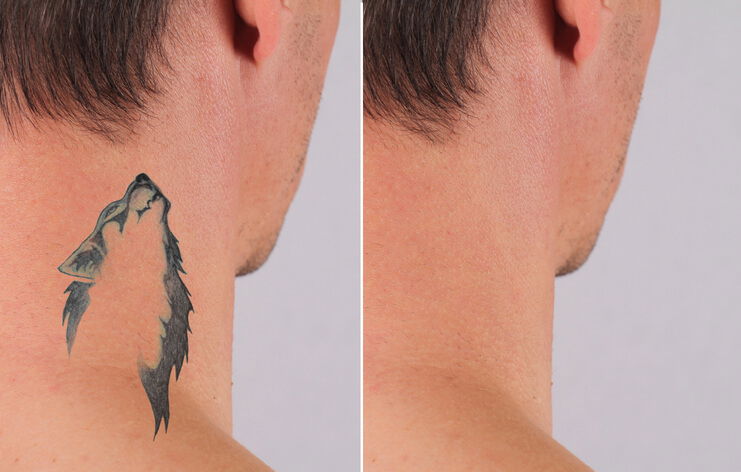Step-by-Step Breakdown of the Laser Tattoo Removal Process in Dubai

Laser tattoo removal is a popular and effective method used to erase unwanted tattoos. In Dubai, a modern and well-equipped destination for medical and cosmetic procedures, laser tattoo removal is offered in various specialized clinics and skincare centers. This treatment uses advanced laser technology to break down the ink particles embedded in the skin, gradually fading and removing the tattoo over several sessions. In this guide, we’ll walk you through the step-by-step process of Tattoo Removal Dubai.
Understanding Laser Tattoo Removal
Laser tattoo removal is a non-invasive procedure that uses high-intensity light beams to target and break down the ink particles in a tattoo. The laser’s energy penetrates the skin, shattering the ink into smaller particles that are eventually absorbed and eliminated by the body’s immune system. This treatment is widely favored for its precision and ability to target only the tattooed area, leaving the surrounding skin unaffected.
The Role of the Laser
The laser used for tattoo removal is typically a Q-switched Nd: YAG laser, which emits light in short, rapid bursts. These bursts of energy are absorbed by the tattoo ink, depending on the color and type of pigment. Different wavelengths of light are used to treat various ink colors, making the laser treatment versatile and effective for all types of tattoos.
Initial Consultation
Before undergoing any laser tattoo removal treatment, you’ll need to attend an initial consultation. This is an important step where the practitioner assesses your tattoo, skin type, and medical history. During the consultation, you’ll be given a thorough explanation of the procedure, expectations, and the number of sessions required for optimal results.
Skin Assessment
The tattoo's location, size, color, and depth in the skin are all factors that affect the removal process. In Dubai, clinics will often conduct a thorough skin assessment to determine how your skin will react to the laser and whether you have any underlying conditions that might impact the procedure. Your practitioner will also discuss the best approach based on your tattoo’s characteristics.
Setting Realistic Expectations
Laser tattoo removal is not a one-time process; it typically requires multiple sessions to achieve full removal. The number of sessions needed will depend on various factors such as the tattoo's age, the depth of the ink, and the size of the tattoo. Your practitioner will provide you with an estimated treatment plan that outlines the expected number of sessions and the interval between each one.
The Laser Tattoo Removal Procedure
On the day of the procedure, the area with the tattoo will be prepared for treatment. The following steps provide a breakdown of what you can expect during the process.
Skin Preparation
The treatment area will be cleaned thoroughly before starting the procedure. Any oils, dirt, or lotions on the skin are removed to ensure the laser can penetrate effectively. Some practitioners may apply a numbing cream or gel to reduce any discomfort during the procedure, although the level of pain experienced varies from person to person.
Laser Application
The practitioner will use the laser to target the tattoo ink. As the laser is applied, you may feel a sensation similar to the snap of a rubber band against the skin. This sensation is brief and generally tolerable. The energy from the laser shatters the ink particles, breaking them down into smaller components that the body can naturally eliminate over time.
Cooling Mechanism
Many modern lasers come with a cooling mechanism to protect the skin from excess heat and reduce discomfort. This feature helps cool the skin as the laser pulses, enhancing patient comfort during the procedure. Some clinics may also use a chilled air system or a cold compress post-treatment to soothe the treated area.

Post-Treatment Care
After the laser tattoo removal session, proper aftercare is essential to ensure optimal healing and prevent complications. The skin may appear red, swollen, or slightly irritated, but these effects are typically temporary and subside within a few hours to days.
Immediate Care
Immediately following the procedure, it’s important to keep the treated area clean and dry. The practitioner may provide specific instructions on how to clean the skin and any creams or ointments to apply. Avoid exposure to direct sunlight and tanning beds to prevent pigmentation changes in the treated area.
Healing Time
The healing time after each session varies, but typically, the skin will take around 2 to 3 weeks to recover before the next treatment session can take place. During this period, the tattoo will start to fade as the body’s immune system breaks down the ink particles. The process is gradual, with noticeable fading occurring between sessions.
Keeping the Area Moisturized
Moisturizing the treated area is crucial to support the healing process. The use of a mild moisturizer or prescribed ointment can help keep the skin hydrated and reduce the risk of scarring. It’s important to avoid scratching or picking at the treated area, as this could lead to scarring.
Follow-Up Sessions
Laser tattoo removal typically requires multiple sessions spaced several weeks apart. The exact number of sessions varies depending on the tattoo’s size, color, and depth. As each session progresses, the tattoo will continue to fade, and the skin will gradually return to its normal appearance.
Gradual Fading of the Tattoo
Over time, you will notice that the tattoo begins to fade as the ink is broken down and removed by the body. The fading process can take several months, with noticeable changes occurring after each session. Depending on the tattoo's complexity, complete removal may require anywhere from 4 to 10 sessions.
Interval Between Sessions
Sessions are typically scheduled every 6 to 8 weeks to allow the skin time to heal and the body to eliminate the broken-down ink particles. Scheduling your sessions at the appropriate intervals is crucial for the success of the treatment.
Final Results
After completing all of your laser Tattoo Removal in Dubai sessions, the final result is typically a significant fading or complete removal of the tattoo. The effectiveness of the treatment depends on various factors, including the quality of the ink used, the size of the tattoo, and the number of sessions required.
Achieving Clear Skin
For many individuals, the goal of laser tattoo removal is to achieve clear skin with minimal to no visible remnants of the tattoo. While some tattoos may be fully removed, others may require touch-up treatments for more stubborn ink colors.
Long-Term Care
Once the tattoo has been successfully removed, it’s essential to continue caring for the skin to maintain its health. Keeping the skin moisturized, protected from the sun, and free from irritation ensures the long-term appearance of the treated area.
Conclusion
Laser tattoo removal in Dubai is a highly effective and efficient method to remove unwanted tattoos. The procedure involves a series of treatments, each focused on gradually breaking down the ink and allowing the body to eliminate it. While the process can be lengthy, the results are often worth the effort, offering individuals the opportunity to restore their skin to its natural state. With the right care and patience, laser tattoo removal can successfully help individuals achieve their desired outcome, whether that’s complete tattoo removal or significant fading.
